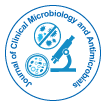

Perspective - (2025)Volume 9, Issue 1
The rapid rise of antimicrobial resistance (AMR) has prompted scientists to explore novel therapeutic strategies that go beyond traditional antibiotic development. Among these, CRISPR-Cas (Clustered Regularly Interspaced Short Palindromic Repeats CRISPR-associated proteins) systems have emerged as a revolutionary gene-editing tool with enormous potential to combat drug-resistant pathogens. Originally discovered as a bacterial immune mechanism against phage infection, CRISPR-Cas technology has been repurposed to selectively target and disrupt antimicrobial resistance genes in pathogenic bacteria. Unlike broad-spectrum antibiotics, CRISPR-based antimicrobials offer unprecedented specificity, allowing researchers to directly eliminate resistant strains or resistance-conferring plasmids without affecting the surrounding microbiota. This specificity represents a promising avenue for restoring the efficacy of existing antibiotics and controlling the spread of resistance in clinical and environmental settings.
One of the most compelling applications of CRISPR-Cas in AMR control is its ability to re-sensitize resistant bacterial populations. By designing guide RNAs that target resistance genes such as blaNDM-1, mecA, or vanA, CRISPR-Cas constructs can be introduced into resistant bacteria, resulting in precise DNA cleavage and subsequent loss of resistance traits. Studies using bacteriophage delivery systems have demonstrated the feasibility of this approach in both in vitro models and animal infections. For instance, phage-delivered CRISPR-Cas9 targeting blaTEM genes has successfully reversed resistance to β-lactam antibiotics in Escherichia coli. Moreover, multiplexing strategies enable simultaneous targeting of multiple resistance genes, which is particularly valuable given the prevalence of multidrug-resistant (MDR) organisms in clinical settings.
Beyond therapeutic applications, CRISPR technology can serve as a powerful surveillance and diagnostic tool for AMR. CRISPR-based biosensors, such as the SHERLOCK and DETECTR platforms, have been developed to detect nucleic acid sequences specific to resistance genes with high sensitivity and speed. These systems hold promise for rapid point-of-care diagnostics, especially in resource-limited settings where timely identification of resistant infections is crucial for effective treatment decisions. Furthermore, CRISPR interference (CRISPRi) can be utilized to transiently silence resistance genes, offering a controllable way to study gene function and antibiotic susceptibility in a laboratory setting, thereby accelerating our understanding of resistance mechanisms.
Despite these promising developments, several challenges limit the clinical translation of CRISPR-Cas systems in AMR management. One major hurdle is the efficient and safe delivery of CRISPR constructs into target bacterial populations. Current delivery methods, including bacteriophage vectors, conjugative plasmids, and nanoparticles, face limitations in terms of host range, stability, and immunogenicity. Moreover, the use of phage vectors can trigger immune responses or lead to horizontal gene transfer of unintended sequences, raising biosafety concerns. Off-target effects, though less prevalent than in eukaryotic gene editing, remain a risk and necessitate meticulous design and validation of guide RNAs to ensure specificity and minimize collateral damage.
Ethical and regulatory issues further complicate the deployment of CRISPR-based antimicrobials. Unlike conventional antibiotics, CRISPR treatments involve gene-editing components that may alter microbial populations or ecosystems in unpredictable ways. The potential for resistance against CRISPR-based tools themselves, through the evolution of anti-CRISPR proteins or CRISPR-immune strains, also raises concerns about the long-term sustainability of this approach. In addition, the commercial scalability of CRISPR antimicrobials is still under development, with high costs and manufacturing complexities posing barriers to widespread adoption. Public acceptance and international regulations must evolve alongside these technologies to ensure responsible and equitable use.
In conclusion, CRISPR-Cas systems offer a groundbreaking and highly targeted strategy for addressing antimicrobial resistance, one of the most pressing public health threats of our time. Their ability to selectively eliminate resistance genes, re-sensitize bacterial strains to antibiotics, and facilitate rapid diagnostics positions CRISPR as a potential game-changer in the fight against AMR. However, the journey from bench to bedside is fraught with scientific, logistical, ethical, and regulatory challenges that must be carefully navigated. Continued interdisciplinary research, combined with cautious implementation and global cooperation, will be essential to harness the full promise of CRISPR technologies while mitigating their risks. As the AMR crisis deepens, CRISPR-Cas systems may well become a cornerstone in a new generation of precision antimicrobial therapies, provided the pitfalls are addressed with the rigor and foresight they demand.
Citation: Liu W (2025). CRISPR-Cas Systems in Combating Antimicrobial Resistance: Promise and Pitfalls. J Clin Microbiol Antimicrob.09:215.
Received: 03-Mar-2025, Manuscript No. JCMA-25-37625; Editor assigned: 06-Mar-2025, Pre QC No. JCMA-25-37625 (PQ); Reviewed: 20-Mar-2025, QC No. JCMA-25-37625; Revised: 27-Mar-2025, Manuscript No. JCMA-25-37625 (R); Published: 03-Apr-2025 , DOI: 10.35248/ JCMA.25.09.215
Copyright: © 2025 Liu W. This is an open-access article distributed under the terms of the Creative Commons Attribution License, which permits unrestricted use, distribution, and reproduction in any medium, provided the original author and source are credited.